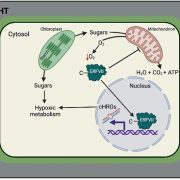
Oxygen supply dictates growth and metabolism in young leaves
Plant Science Research WeeklyWhen thinking of hypoxia or low oxygen in plants, the image that often comes to mind is one of flooding stress. However, it’s not just plants exposed to excess of water that face hypoxia. Even in growing plants, hypoxia sensing and the existence of hypoxic niches play a vital role in their development.…

Phase separation determining meiotic interference-sensitive meiotic crossover formation
Plant Science Research WeeklyIn sexual reproduction, meiosis creates new combinations between homologs and diversifies the genetic information among gametes and progenies. Most meiotic crossovers (COs) are mediated by a group of ZMM factors, including HUMAN ENHANCER of INVASION-10 (HEI10), which is suggested to concentrate at CO…
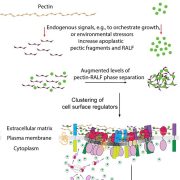
Signaling secrets: FERONIA´s dynamic interplay with interactors at the cell surface
Plant Science Research WeeklyNamed after the Etruscan goddess of fertility, the receptor-like kinase FERONIA (FER) is involved in more than fertility. A recent paper by Liu, Yeh et al. sheds light on the intricate signaling processes taking place on the cell surface in response to environmental signals regulating growth and development…
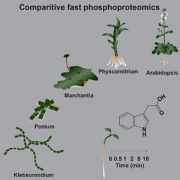
RAF-like protein kinases mediate a deeply conserved, rapid auxin response
Plant Science Research WeeklyThe definition of a phytohormone has not always been clear, though most plant biologists agree that phytohormones can be defined as endogenous molecules capable of triggering signaling cascades and associated responses by binding to specific receptors. They have been extensively studied in flowering…
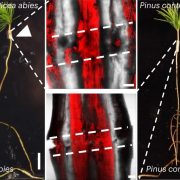
Sealing the deal to graft healing: PAT1 as a novel regulator of graft formation
Plant Science Research WeeklyGrafting is a way to combine the desirable properties of two plants by joining the scions and rootstocks from different plants. While frequently practiced, little is known about how grafting within and between coniferous species works. Most pertinently, grafting success relies on how efficiently connected…
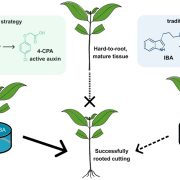
Contribution of synthetic auxin conjugates to clonal propagation of woody species
Plant Science Research WeeklyFrom food and energy to paper and timber, many industries rely on clonal propagation of tree species. Successful propagation of cuttings depends on adventitious rooting ability, which is known to decline with tree age and to be naturally low in many species of interest. Propagators therefore employ naturally…
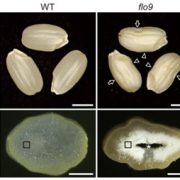
Discovering and characterizing a protein involved in endosperm starch formation in rice
Plant Science Research WeeklyRice is a globally important crop, with most of its calorific component coming from starch. Despite its importance, we do not fully understand the mechanism of starch formation in the rice endosperm. To discover novel factors involved in this process, Yan et al. performed a forward genetics screen and…
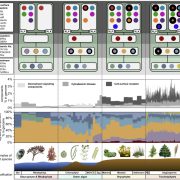
Patterns of evolution: Dissecting the history of pattern recognition receptors from development to immunity
Plant Science Research WeeklyPlants use a suite of cell-surface receptors as signal transducers in both development and immunity. In this study, Ngou et al. utilized computational and functional approaches to examine the evolutionary origin of a subclass of plant cell-surface receptors called pattern recognition receptors (PRRs),…

Seasonal flowering and seasonal growth measure light duration differently
Plant Science Research WeeklyOne of the first lessons a plant biologist learns is that many plants coordinate their seasonal flowering through measuring daylength, and that this process involves both photoreceptors and the biological clock that functions inside of cells. Of course, daylength also affects plant metabolism, in part…

